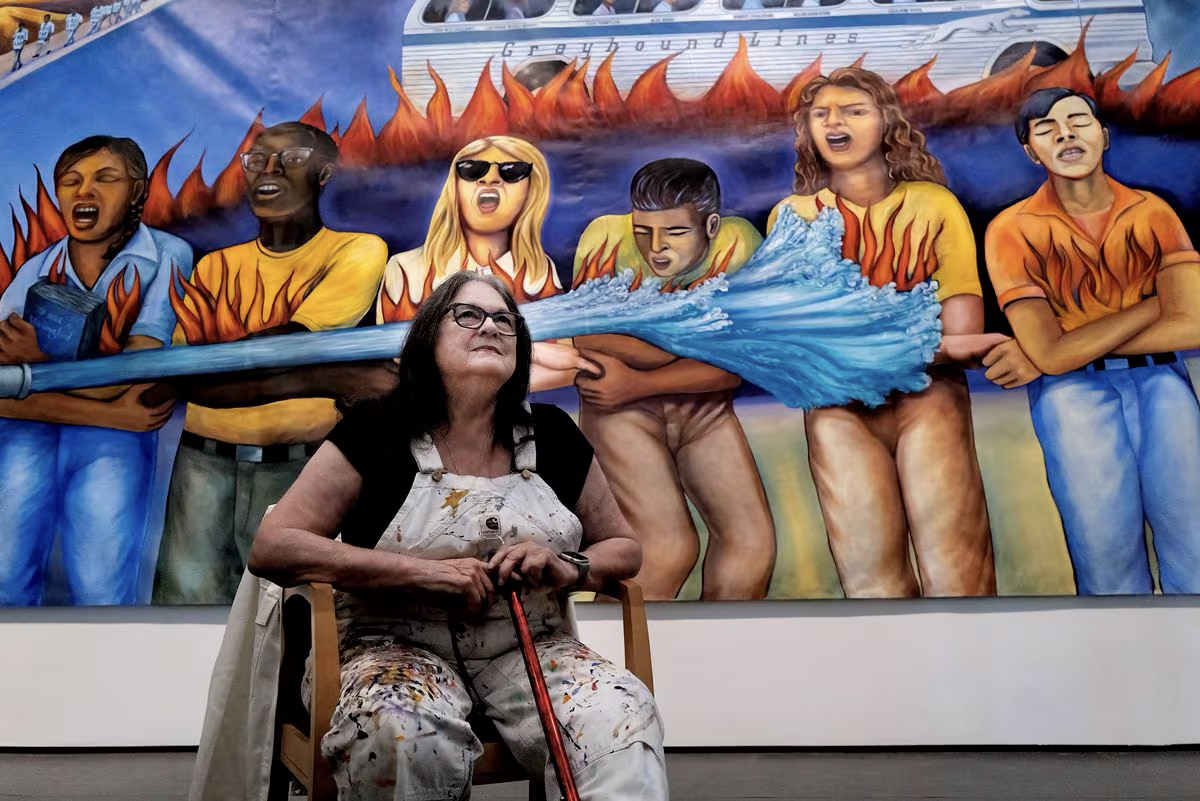
Schools have taught alternative versions of United States history for decades — a fact that continues to be the source of controversy. Hundreds of books have been devoted to reviewing and reinterpreting the country’s founding. Political discourse has changed too, incorporating new points of view. In Los Angeles, Judy Baca chose to tell her version of the nation’s unofficial history out in the open and for all to see. The Chicana artist and activist — one of the movement’s most important figures — has been doing this work since 1976, concentrating her efforts in a project that has survived to the present day: The Great Wall of Los Angeles.
With a bit of luck, anyone who visits the Resnick Pavilion at the Los Angeles County Museum of Art (LACMA) in the coming months will see Baca, dressed in a paint-splattered jumpsuit, working on a new section of the gigantic mural, to eventually join with its larger whole, which is located in the LA’s San Fernando Valley, and is considered one of the largest murals in the world. Its sweeping scenes feature leaders from the farmworkers’ movement that famously called for a boycott of Central California grapes to demand better conditions for workers, many of them immigrants. César Chávez appears on one panel, holding a flag, as does Dolores Huerta, who holds a megaphone in her hand. There are lesser-known characters as well, like the Filipino labor organizer and movement leader, Larry Itliong.
“It’s a story of evolution,” says Baca, as she sits on a small stool and paints the face of the famous United Farm Workers leader. “As much as I’ve tried to make it about Los Angeles, it’s also a national story.” The 77-year-old artist, the granddaughter of Mexicans who migrated to Colorado, learned to paint to scale in the studio of Mexican muralist David Alfaro Siqueiros. Now, she comes to the museum two or three times a week to sketch out the 60-foot-long scene with thick blue paint. She starts the process, then her team covers the canvas in a monochrome wash that adds dimension and highlights the darker colors.
[…]Article by LUIS PABLO BEAUREGARD